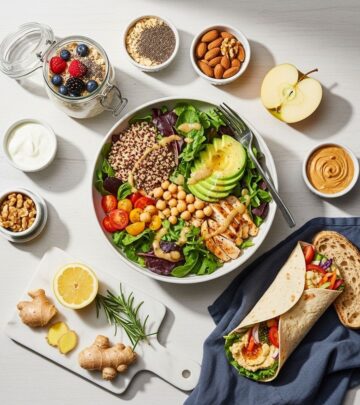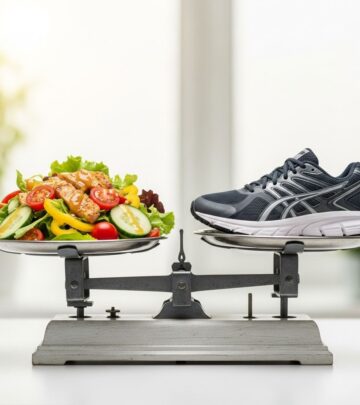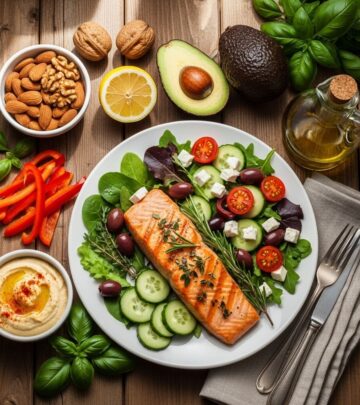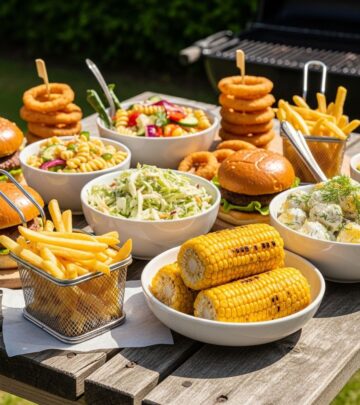How to Exercise and Build Muscle in a Doberman Pinscher
Unlock your Doberman Pinscher’s strength and fitness with structured exercise and targeted muscle-building routines.
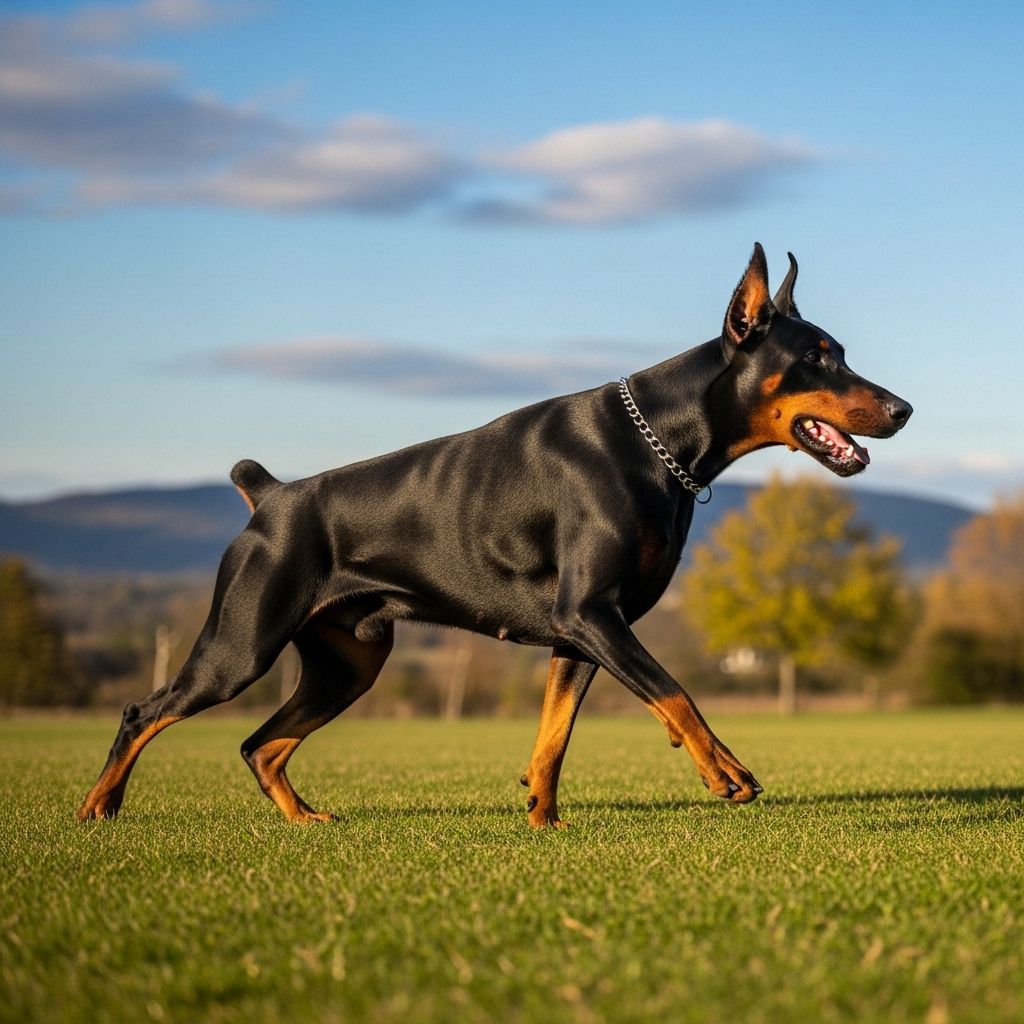
Doberman Pinschers are celebrated for their athletic build, intelligence, and high energy. Maximizing your Doberman’s physical potential involves more than vigorous exercise — it demands a strategic blend of activity, nutrition, and recovery. This comprehensive guide details proven methods for developing muscle, maintaining fitness, and tailoring routines to the Doberman’s unique genetic profile.
Understanding Doberman Pinschers: Genetics & Build
Before optimizing your Doberman’s exercise routine, it is crucial to understand their genetics and physical attributes:
- Lean, Athletic Frame: Dobermans are naturally built like marathon runners, not bodybuilders. They possess remarkable stamina and agility but have genetic limitations on extreme musculature.
- Breed Variation: The European Doberman tends to have a stockier and slightly more muscular build compared to the American Doberman, which is typically leaner.
- Genetic Limits: Every dog’s muscle potential is influenced by its bloodline. Observing your Doberman’s parents can provide clues to adult physique, though individual variation is inevitable.
Setting realistic expectations ensures your exercise program enhances your dog’s natural strengths rather than pushing for unattainable bulk.
Key Principles for Building Muscle in Dobermans
- Quality Nutrition
- Varied Resistance-Based Exercise
- Sufficient Rest & Recovery
- Motivation & Enjoyment
All these factors play a role in developing a healthy, muscular companion.
Nutrition: Foundation of Muscle Growth
Protein is the cornerstone of muscle development for athletic dogs. Proper nutrition is non-negotiable for healthy muscle gain.
- High-Protein Diet: Aim for dog food with 30% or higher protein content. Consult your veterinarian to tailor protein intake for age, weight, and activity level.
- Quality Ingredients: Choose foods with animal-based proteins (chicken, beef, lamb, fish), and avoid excessive fillers or grains.
- Supplements: Discuss supplements like fish oil (for joint health), vitamins, and amino acids with your vet if your dog is involved in intense activity.
A balanced, protein-rich diet provides the raw materials for muscle growth triggered by exercise.
Effective Muscle-Building Exercises for Dobermans
Targeted resistance-based activities are vital for muscle development. Choose exercises your Doberman enjoys; motivation leads to consistent effort and best results.
- Running Up Hills: Engages major muscle groups plus the core, providing resistance that builds leg and glute strength.
- Running in Sand: Adds natural resistance, challenging stabilizer muscles and improving overall strength.
- Swimming: A low-impact full-body workout that safely increases muscle tone without stressing joints.
- Agility Training: Obstacles, tunnels, jumps, and weaving exercises build coordination, core strength, and muscle across the entire body.
- Weight Pulling: Structured resistance exercise, such as pulling weighted sleds (start light and progress gradually), targets leg and core muscles.
- Tug of War: Interactive play that strengthens jaw, neck, shoulder, and chest muscles.
- Fetch: Sprinting, jumping, and retrieving burn calories and build strength.
Sample Weekly Muscle-Building Schedule
| Day | Activity |
|---|---|
| Monday | Long Distance Walk/Run |
| Tuesday | Strength Building (e.g., hill sprints, swimming) |
| Wednesday | Rest Day |
| Thursday | Endurance Play (fetch, sand runs) |
| Friday | Strength Building (weight pulling, agility) |
| Saturday | Rest Day |
| Sunday | Fun Day (mix of favorite activities) |
Follow strength-building days with a rest day to allow muscles time to recover and rebuild. Adjust the schedule to suit your dog’s disposition and health.
Understanding Individual Exercise Needs
Energy Levels
Dobermans are energetic dogs bred for stamina and work. Most adults require 1 to 2 hours of exercise daily, incorporating walks, running, and play. High-energy activities are ideal but should be balanced against age, overall health, and personality.
Age Considerations
- Puppies: Short, frequent play (15–30 minutes) is sufficient due to developing bones and joints.
- Adults: Can manage more vigorous, extended workouts including running and resistance play.
- Seniors: Opt for gentle activities such as leisurely walks and low-impact games. Monitor closely for signs of fatigue or discomfort.
Customization
Every Doberman is unique. Monitor your dog for signs of overexertion, injury, or reluctance, and tailor the schedule as needed. Always prioritize quality over quantity of exercise.
Additional Exercise Ideas
- Frisbee Fetch: Combines sprinting and leaping; use lightweight, soft frisbees for safety.
- Obstacle Courses: Set up simple courses at home using cones, tunnels, and jumps. Start slow and increase complexity as your Doberman learns.
- Obedience Training: Mental exercises (command drills, tricks) can supplement physical workouts and improve focus.
- Group Play: Socialization and play with other dogs enhance stamina and promote good behavior.
- Swimming (repeat): Ideal for hot weather and joint protection.
Rest & Recovery
Just as important as active days are restful periods. Muscle tissue needs time to repair after strenuous activity. Ensure your Doberman has at least two rest days per week and never force exercise if your dog is sore or tired. Signs of fatigue include limping, excessive panting, lethargy, and reluctance to move.
Safety Tips for Doberman Exercise Routines
- Consult Your Veterinarian: Before starting any new regimen, get approval to avoid exacerbating underlying conditions.
- Warm Up and Cool Down: Begin and end sessions with moderate activity to protect joints and muscles.
- Hydration: Ensure access to water before, during, and after exercise.
- Gradual Progression: Increase resistance and intensity slowly to avoid injury.
- Monitor Weather: Dobermans are sensitive to heat and cold; adjust outdoor activities seasonally.
Frequently Asked Questions (FAQs)
Q: Can a Doberman become as muscular as a Rottweiler or Pitbull?
A: No. Due to their genetics and natural frame, Dobermans typically have a more athletic, streamlined build. Intensive training can improve tone and definition, but they will not reach the stocky musculature of breeds like the Rottweiler.
Q: How much protein should I feed my Doberman?
A: Foods containing 30% or more protein are ideal for muscle-building Dobermans, but always consult your vet for individualized recommendations based on age and activity level.
Q: What are signs I should reduce exercise intensity?
A: Signs include limping, excessive panting, unwillingness to play, or visible fatigue. Insert rest days, reduce resistance, and consult a professional if symptoms persist.
Q: Is agility training good for Dobermans?
A: Yes, agility training improves coordination, strength, and mental focus. Some Dobermans may dislike it, so adjust routines to fit your dog’s preferences.
Q: How often should rest days be scheduled?
A: Ideally, one rest day follows each strength-building session. Two rest days per week for active Dobermans help prevent overtraining and allow muscles to rebuild.
Conclusion: Maximizing Your Doberman’s Potential
A muscular, healthy Doberman is the product of focused nutrition, exciting resistance-based activities, regular rest, and attentive customization to personality and genetics. By following these strategies and weekly schedules, owners can unlock their Doberman’s natural athleticism and enjoy a lifetime of energetic companionship.
Read full bio of medha deb


